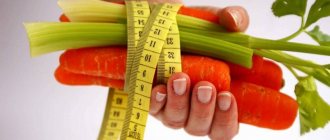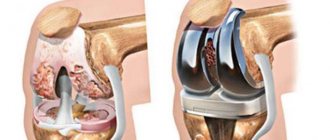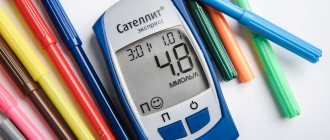GBU RO "MEDICAL INFORMATION AND ANALYTICAL CENTER"
RATIONAL NUTRITION IS THE KEY TO HEALTH
(memo for teenagers)
Proper nutrition during adolescence (from 10 to 18 years) plays an important role in the formation of a maturing body. During this period, significant changes occur in the body’s response to various environmental factors, puberty occurs, in the period from 10 to 13 years, accelerated growth of the body is observed, from 13 to 16 years, the active formation of endocrine glands is observed, and a number of parts of the brain are formed. According to statistics, about 30% of chronic diseases in adolescents studying in general education institutions are associated with poor nutrition.
The most important principle of rational nutrition for adolescents is ensuring that the caloric content of the diet matches the energy expenditure of the body.
Food is a “building material” necessary for the growth and development of the body. The heat and energy consumption of a teenager is relatively higher than that of an adult. So, an adult needs an average of 40–42 kcal per day, a teenager – 50–52 kcal per 1 kg of body weight. Teenagers should receive at least 2900 - 3100 kcal per day, with the daily caloric intake distributed among meals as follows: breakfast - 25%, lunch - 35 - 40%, afternoon snack - 10 - 20%, dinner - 20 - 25% . It is useful to give a teenager vinaigrette, radishes, radishes with sour cream or vegetable oil, tomatoes, fresh cucumber, green onions with sour cream or herring before meals. Vegetables stimulate the appetite, promote the secretion of digestive juices and improve digestion.
- Insufficient calorie intake leads to rapid depletion and disruption of the functions of all organs and systems.
The diet of adolescents should be balanced in terms of the content of essential nutrients: proteins, fats, carbohydrates, vitamins and minerals.
A teenager's diet should be varied and include products of animal and plant origin. Proteins - the main component of any living cell - are used to build tissues and organs of the body: muscles, nerves, blood, brain, heart, etc. During the period of active growth, an increased amount of calcium is required, which is necessary for the prevention of diseases of the musculoskeletal system, so it is necessary to include dairy products in the diet of adolescents - cottage cheese, milk, kefirs and yoghurts. In addition, the most important building material is animal protein contained in meat. The optimal ratio of proteins, fats and carbohydrates can be expressed as 1:1:4, i.e. a teenager should receive 4 times more carbohydrates than proteins and fats. They are especially important for the formation of the body's defenses - the so-called immune bodies. Under the influence of digestive juices in the gastrointestinal tract, proteins are broken down into simpler substances - amino acids. In cells and tissues, new proteins necessary for a given organism are formed from amino acids. The daily protein requirement for a teenager is 1g. for 1 kg. normal body weight. Fats and carbohydrates are the main sources of energy. Their amount in a teenager’s diet is reflected in his body weight. The most valuable dairy fats for teenagers are: butter, cream, sour cream. They are well absorbed and are a source of vitamins A and D. The daily diet should also include 10–20 g of vegetable oil, which contains fatty acids that are important for a fast-growing body. To prevent acne, it is recommended to limit your intake of foods high in fat. Carbohydrates are found mainly in products of plant origin - sugar, bread, cereals, potatoes, vegetables, fruits, berries. With proper nutrition, a teenager should receive about 500 g of carbohydrates during the day.
- An unbalanced diet can lead to obesity and developmental delays, diabetes mellitus and hypertension.
A significant portion of the minerals obtained from food is used for bone growth and teeth formation. The richest sources of calcium and phosphorus are milk, dairy products (especially cottage cheese, cheese) and vegetables. It is useful to prepare cheesecakes, dumplings, porridge with milk, milk soups for teenagers, and be sure to give vegetable side dishes for meat and fish dishes. This will allow you to regulate the correct ratio of calcium and phosphorus. When combining products of plant and animal origin (for example, milk with cereals), calcium absorption increases significantly. Phosphorus salts enter the body from products of animal and plant origin (liver, brains, cheese, fish, beans, nuts, cereals, etc.). They have a beneficial effect on the central nervous system, especially during periods of intense mental work.
- A lack of calcium and phosphorus salts in the diet leads to improper development of bones, damage to teeth and disruption of the central nervous system.
Food should also contain salts of iron, iodine, potassium, magnesium, sodium, sulfur, manganese, etc. Thus, iron is part of blood hemoglobin, sulfur is part of amino acids (cystine), iodine is part of thyroid hormone. The vast majority of minerals contained in the body are found in the bones. Table salt adds flavor to food and is also used by the body to produce hydrochloric acid, which is part of the gastric juice and plays a large role in the digestion of food. Food must contain very important organic substances - vitamins. They promote chemical transformations of basic foodstuffs and promote normal growth and development of the body. Vitamin A is found in milk fats, butter, egg yolk, milk, fish oil, liver, carrots, tomatoes, pumpkin, apricots, persimmons, lettuce, spinach, rose hips, and yellow corn. Vitamin B 2 (riboflavin) increases the digestibility of food, is involved in metabolism and hematopoiesis, and affects the growth of a teenager. Vitamin B2 is found in milk and dairy products (cottage cheese, cheese), eggs, yeast. Vitamin C is found mainly in fresh vegetables, berries and fruits (onions, black currants, rose hips, lemon, orange, lettuce, tomatoes, cabbage). A varied diet satisfies the body's daily need for vitamins and minerals. Vitamin D is found in egg yolk, caviar, milk, butter and especially fish oil.
- Deficiency of micronutrients - vitamins, microelements, polyunsaturated fatty acids leads to the development of immunodeficiency states.
Organizing a balanced diet requires adherence to a daily routine - a clear meal schedule.
For normal growth and development, adolescents need a correct diet, which includes strict adherence to meal times, rational distribution of food by weight, calorie content and volume, i.e. Teenagers' meals should be fractional, regular and even. Eating at the same hours maintains a good appetite and promotes the timely release of gastric juice. A teenager should eat at least 4 times a day, i.e. every 3 – 4 hours.
- Long breaks between meals adversely affect the digestive function of the body and can cause fatigue, decreased performance, headaches, and the formation of functional abnormalities and diseases.
Sample menu for teenagers
Ideally, the ratio of meals should be as follows: breakfast - 25%, lunch - 35-40%, afternoon snack - 15% and dinner - 20-25% of the total daily food volume.
For breakfast you should eat hot meat dishes and snacks. For example, a vegetable or fruit salad, a sandwich with butter and cheese. You can wash it down with hot tea, cocoa drink, jelly, rosehip infusion or compote. Coffee is especially contraindicated for teenagers in the morning. Ideally, this is porridge with milk, stewed meat or fish, or casserole, or vegetable stews.
At lunch it is simply vital to have a first course, soup, chicken broth and so on. The second one is definitely hot. Meat or fish with a side dish of vegetables or cereals. It is also good to eat fresh fruit at lunch. You should not overuse cereals; this dish is enough once a day. But it is advisable to use different cereals in porridges. Buckwheat, oatmeal and millet cereals must be present in the diet.
Teenagers' meals do not necessarily include an afternoon snack. Firstly, it will replace unwanted snacks, and secondly, it will bring a lot of benefits to a growing body. Just as it should consist of dairy and bakery products.
Dinner should be light so as not to overload your stomach at night. It could be a casserole, a light porridge, an omelet. And just before bed, it’s very good to drink a glass of non-cold milk, preferably with honey.
Product groups
There are six groups of products that are simply vital for the full growth and development of a teenager.
1. Complex carbohydrates. These are the main suppliers of energy, which is so necessary for rapid growth. They are found in cereals and cereals.
2. Products containing protein. This includes animal meat, poultry and fish. Protein is the main building material for soft tissues and internal organs. And, by the way, meat, especially red meat, contains iron, a deficiency of which can cause anemia in a teenager.
3. Plant fiber. They are nothing more than vegetables, roots and fruits. Fiber is necessary for normalizing the gastrointestinal tract and cleansing the body of toxins thanks to the natural antioxidants contained in these products.
4. Vegetable fats. These are vegetable oils and various nuts. The use of these products can greatly help a teenager avoid problems with hair loss and brittle nails that are quite common at this age.
5. Milk and fermented milk products. These are essential suppliers of calcium, vitamin D and phosphorus in the diet of adolescents.
6. Clean drinking water. For normal functioning of the body, you need to drink an amount of water per day at the rate of 30 mg per 1 kg of body weight.
And if the younger generation adheres to these simple nutritional recommendations, health and normal development will be ensured.
By the way, if at this age a person does not get used to healthy food and start eating right, then with age it will be quite difficult to change his habits and eating habits. And problems associated with poor nutrition can manifest themselves not only in excess weight, but various diseases can also arise.
Diet
14–16 years are a time of active growth, which is accompanied by increased appetite. The task of parents is to explain to the teenager the harm of irregular eating dry food, to find an alternative to chips and buns, for example, dried fruits and nuts.
Meals should be four meals a day:
- Breakfast – 25%;
- Lunch – 35–40%,
- Afternoon snack – 15%,
- Dinner – 20–25% of daily nutrient requirements.
- Breakfast should include a snack, main course and drink. As a snack there can be vegetables or fruits, cheese or cottage cheese, eggs, salads. Used as hot porridge, vegetable stew, meat, fish. A drink in the form of hot tea, compote, jelly, milk.
Breakfast options for teenagers:
- Cottage cheese casserole with raisins or chocolate sauce.
- Oatmeal porridge, milk with dried fruits or berries.
- Millet milk porridge with pumpkin, banana, apple or raisins.
- Scrambled eggs, omelet, with meat, green pot or vegetables.
- Curd cheesecakes with sour cream or jam and yogurt.
- Buckwheat milk porridge with vegetables.
- The child often receives lunch at school. It should consist of soup, a second course (side dish with meat or fish), a third course may include a drink with cookies, yogurt, etc.
- For an afternoon snack, you can give your child fruit, cottage cheese, and vegetable salad.
- For dinner you can cook:
- Meat cutlets with vegetables;
- Cottage cheese casserole with apples;
- Omelette with pasta;
- Porridge with dried fruits;
- Dumplings with jam or berries and fruits;
- Fish soufflé with stewed carrots.
Before going to bed, as an option, you can offer a glass of kefir or milk.
The calorie content of food is calculated as follows: approximately 1.8 kcal should be consumed per 1 kg of body weight. This means that a teenager should eat approximately 3000 kcal per day, and with increased physical activity - 3500 kcal. Boys have a particularly high need for energy during this period, and it is not uncommon for those around them to be amazed by their increased appetite.
Quality food composition
The qualitative composition of food is as follows: the ratio of proteins, fats and carbohydrates is 1:1:4.
Squirrels
The average protein requirement per 1 kg per day is 2–1.5 g, and 50% of it should be animal protein (beef and poultry, fish, dairy products). It has a primary role because it is a structural material for growth and the immune system, and is necessary for muscle strength. With a lack of protein in the body, the brain suffers, memory and mental abilities decrease, the child gets tired faster, and the immune system cannot cope with infections.
In addition to high levels of protein, dairy products are rich in calcium, and meat is the main source of iron, while fish is rich in phosphorus and minerals.
On a note! Protein content per 100 g of product:
- Meat – 25 g,
- Hard cheese – 25 g,
- Fish – 20 g,
- Milk – 3 g,
- Eggs – 12 g,
- Nuts – 28 g,
- Bread – 8 g,
- Beans and peas – 5 g.
Fats
The daily requirement for fat is about 100 g. For a teenager, the role of fat is to synthesize sex and other steroid hormones. Vegetable oils, butter and sour cream are more useful. Vegetable fats are beneficial due to the content of polyunsaturated fatty acids, and animal fats – due to fat-soluble vitamins such as A and D. 70% of incoming fats should be of vegetable origin and only 30% of animal origin.
On a note! Sources of vegetable fats:
- Vegetable oils (99.9% fat),
- Nuts (50–60%),
- Oatmeal (7%) and buckwheat (3%) cereals.
Sources of animal fats:
- Lard (90% fat),
- Butter (75%),
- Sour cream (about 30%),
- Cheeses (15–30%).
Carbohydrates
The daily requirement for carbohydrates is 10–15 g per 1 kg of body weight (depending on physical activity, ambient temperature, etc.). The main function of carbohydrates is to provide the body's energy needs. Sources of healthy carbohydrates for a child are cereals, vegetables, bread, legumes, greens, fruits, berries, and not buns, cakes and sweets. Vegetables are also the main source of vitamins and minerals, and the dietary fiber they contain normalizes intestinal motility. You can read about how to choose fresh and healthy vegetables and fruits in our relevant articles.
Liquid
The body's need for water in children and adolescents is higher than in adults and amounts to 50 ml per 1 kg of body weight (in adults - 30–40 ml). It is useful to drink mineral water, teas, decoctions of herbs and dried fruits, vegetable and fruit juices. Carbonated drinks are not able to quench thirst, they irritate the gastric mucosa, contribute to the leaching of calcium from bones and teeth, and can cause allergic reactions.
Consumption standards for vitamins, macro- and microelements for a teenager
A teenager must receive the required amount of macro- and microelements and vitamins from food. In the summer, it is enough to eat a variety of fresh vegetables and fruits (berries), and in the winter-spring period you can take a course of vitamin preparations. It is believed that by eating six fruits of different colors a day, we meet the need for all the necessary vitamins and minerals!
Calcium (1.2 g/day) and magnesium (300 mg/day) are needed for building bones and teeth; magnesium also relieves the excitability of the nervous system, helps cope with insomnia, and has a beneficial effect on the heart muscle.
Phosphorus (1.8 g/day) is necessary for metabolism, normal functioning of the nervous system and brain, muscles, liver and kidneys.
Iron (15–18 mg/day) is necessary for hematopoiesis and saturation of the body with oxygen.
Sodium (4 g/day), chlorine and potassium (4 g/day) normalize water-salt metabolism, acid-base balance, potassium removes excess water and sodium from the body.
Iodine (130 mcg/day) is necessary for the normal functioning of the thyroid gland.
Fluoride (2–3 mg/day) is involved in the construction of bones and teeth.
Vitamins are needed for the normal course of metabolic processes and the functioning of the body as a whole. They participate in various biochemical processes, ensure the physical and mental performance of a teenager, and strengthen the immune system.
Daily vitamin intake for teenagers:
- A – 1.5 mg;
- B1 – 1.8 mg;
- B2 – 2.5 mg;
- B6 – 2.0 mg;
- B12 – 3.0 mcg;
- RR – 19 mg;
- C – 75 mg;
- E – 15 mg;
- D – 2.5 mg.
Proper nutrition for gaining muscle mass
There are many methods for how to eat properly for an athlete; this issue has been studied in great detail and thoroughly. Teenagers who want to gain muscle mass should start training at the age of fourteen. The main condition is proper nutrition, consumption of large amounts of carbohydrates and proteins. In addition, vitamins are needed, especially B12 and B6. At this age, many teenagers work out at home, doing push-ups, pull-ups, and pumping up their abs. The diet of a teenage athlete must provide the availability of plastic material for the construction of muscle cells. The ratio of carbohydrates, fats and proteins in this case should be: 4-1-1. The body's energy costs must be compensated by nutrition, and the menu should be drawn up with this in mind. The diet of a teenager involved in sports must comply with the conditions of the so-called fractional diet. Hot food is a must. The menu should include fish, meat, poultry, eggs, cereals, cheese, fresh fruit, cottage cheese, vegetable oils, juices, bread. When participating in winter sports, more fats should be included in the diet of a teenage athlete.
Weight and height standards for teenagers 14–16 years old
| Age | Girls | Boys | ||
| Height/cm | Weight, kg | Height/cm | Weight, kg | |
| 14 years | 155,4–163,6 | 48,2–58,0 | 156,2–167,7 | 42,8–56,6 |
| 15 years | 157,2–166,0 | 50,6–60,4 | 162,5–173,5 | 48,3–62,8 |
| 16 years | 158,0–166,8 | 51,8–61,3 | 166,8–177,8 | 54,0–69,6 |
How to lose weight correctly
Diets and fasting are not suitable for long-term weight loss and maintaining results. It doesn’t matter what type of obesity develops in a teenager—female or male—it won’t be possible to treat it with additional stress. Strict restrictions harm the body at any age, and even more so during the growth phase.
Let's list the negative consequences of mono-diets:
- the level of cortisol increases - a hormone that is intensively produced in stressful situations - it negatively affects the speed of metabolic processes;
- deficiency of essential nutrients that are needed for normal physical and mental activity;
- the ability to concentrate decreases, and school performance may suffer as a result;
- there is a risk of developing pathologies in the endocrine and reproductive systems.
Diets bring results, but short-term. As a result, in a couple of weeks you will be able to lose 5-6 kilograms, but in the next few weeks they will come back and also bring “friends”. Because during the period of hunger, a changeover to an “energy saving mode” occurs, which means that reserves will be stored whenever possible. In addition, the condition of the skin, hair and nails will worsen.
Nutritionist's comment:
Weight loss in adolescents should occur slowly so that the body does not experience significant stress and adapts to changes in tissue and fluid volumes gradually. The optimal rate is 1-1.5 kg. in Week. The kilograms lost quickly come back at the same speed.
What is the danger: unhealthy manifestations of excess weight
You cannot do without a diet for weight loss in the case of teenage obesity in girls and boys, since the situation needs to be corrected as quickly as possible. Excess body weight is unsafe; it inevitably has a negative effect on the body. The following conditions are typical for overweight children:
- frequent headaches;
- pressure surges;
- shortness of breath with minor physical exertion;
- intense sweating;
- fast fatiguability;
- depressed mood;
- consolidation of eating disorders;
- the formation of a negative attitude towards one’s body and personality, mental disorders.
Fat deposits are not only an aesthetic problem, because they increase the risk of developing such serious diseases as:
- diabetes;
- osteoarthritis and other pathologies of the musculoskeletal system;
- heart failure, coronary disease, stroke;
- tumors;
- liver dysfunction;
- reproductive system disorder, infertility.
Nutritionist's comment:
To avoid eating disorders, it is recommended to reward your child with more than just delicious food. It is important to be able to enjoy nature, outdoor games, and communication with peers in reality, and not just in the virtual space. Parents should demonstrate by their example that sport is not torture of one’s own body, but a fun, pleasant break from everyday activities. To achieve a healthy psychological atmosphere during such a difficult period, it is worth consulting with specialists. Both parents and teenagers themselves often turn to nutritionists at Elena Morozova’s clinic. Everyone can receive psychological advice for building relationships and a competent weight loss program.
Most often, correcting a teenager’s diet and changing his lifestyle requires changes in the lifestyle of the entire family. Fat deposits are a consequence. The reasons most often lie in the food culture that dominates the home. Therefore, parents will have to think not so much about how to strictly control the child’s menu, but also take time to rethink their habits.
Why do boys and girls get fat?
This problem is becoming more and more threatening. Over the past 30 years, the number of children with excess body fat has quadrupled. This happens because the calorie content of the daily diet exceeds the body's needs. Most often it's a matter of overeating. There are other causes of obesity in teenage boys and girls (in the photo there are different degrees and types of the disease).
Among the most significant are:
- sedentary lifestyle;
- lack of daily routine;
- chronic lack of sleep;
- heredity;
- prolonged and uncontrolled use of medications and hormonal drugs;
- psychological distress;
- diseases of the endocrine system and metabolic disorders.
It should be noted that the last point is very rare. Although the diagnosis of the child’s condition should begin with him. Rule out hypothyroidism, diabetes insipidus, epilepsy, insulinoma, brain tumor and other pathologies that can affect metabolic processes and lead to intense weight gain.
Our additional services: Bioimpedance | Marutaka Massage | Pressotherapy | Ion-Detox
And when you are sure that the problem lies in the nutritional culture and the lack of sports in the life of a girl or boy, you can begin to correct the daily routine.
Psychologist's comment:
You should communicate with a teenager on the topic of losing weight delicately, regardless of the stage of obesity and the reasons that led to it. The child is very vulnerable to comments and criticism, and if psychological discomfort and stress arise, eating disorders will only progress, worsening the health and atmosphere within the family.
The participation of parents and doctors in the fate of the girl must be careful and respectful - this is a prerequisite for successful treatment. There are many cases where, after consulting a nutritionist or dietitian, the body mass index increased. A concerned mother brought an overweight son or daughter, a 14-16 year old teenager was given a nutritional consultation to lose weight in order to prevent obesity, and after a few months, instead of normalizing the BMI, the opposite happened - the condition developed into a real disease. This is due to increased stress factors. High school students are very critical of themselves even without our pressure. One awkward word is enough for a child to lose optimism and return to the usual solution to problems - eating.
It is not enough to simply give useful recommendations; it is necessary to earn the young man’s trust and convince him of the need to change his life, set a worthy example, and support him with a kind word.
Food schedule
Meal times are greatly influenced by changes in a child's education. If a student attends classes during the first shift, then the best option for meals would be the following hours:
- breakfast 7:00 - 8:00;
- lunch 10:00 - 11:00;
- lunch 13:00 - 14:00;
- dinner 18:00 - 19:00.
For those who go to school during the second shift, you need to eat at the following times:
- breakfast 8:00 - 9:00;
- lunch 12:00 - 13:00;
- afternoon tea 16:00 - 17:00;
- dinner 19:00 - 20:00.
Do not forget about the basic rules of dietetics; lunch and breakfast together account for about 60% of the total daily calorie intake. Evening meals are taken no later than two hours before bedtime.
Age characteristics
Prevention and treatment of obesity in adolescents begins with determining the extent of the problem. For a detailed analysis, gender, height and body weight should be taken into account.
Here is a simplified table that will help you quickly navigate. For girls the following numbers are relevant:
Boys develop a little slower, so their indicators are different:
There is also another popular method that will help you find out whether weight loss is necessary in adolescence - this is the determination of body mass index (BMI). The interpretation is different from that used for adults. This is due to the fact that the child’s body is in a growth phase, the ratio between tissues (fat, bone and muscle) varies.
Formula:
- height (meters) is squared (for example, 1.7x1.7 = 2.89);
- divide the weight (kilograms) by the resulting number (70/2.89=24.2);
- the BMI value (in our case 24) is deciphered taking into account age and gender.
For a 14-year-old boy this is a serious excess, and for a 17-year-old it is a slight excess of the norm. A special table will help you decipher the received data.
Physical activity
Sport is important for boys and girls, because it is not only a way to expend energy, but also self-realization. Any direction will do - the main thing is to attend training at least 3 times a week. Volleyball, football, dancing, hand-to-hand combat, shaping and even yoga or Pilates - after all, static exercises also bring a lot of benefits.
Look at our Clients' Acknowledgments and Success Stories - View
A healthy menu and regular exercise are very effective for losing weight in teenagers, as they solve the following problems:
- metabolism accelerates;
- coordination of movements and posture improves;
- the proportion of muscle mass that consumes energy even at rest increases;
- self-confidence grows.
If for some reason you can’t go to the gym, you can go for morning jogging, rollerblading, or just walk a lot. Start with simple sets of exercises, increase the load gradually, in proportion to your physical fitness. If you get down to business with excessive enthusiasm, you can get injured or get sore, which will force you to interrupt your activities for a while.
Dietary meals for weight loss for children - diet for a week
When developing weight loss methods for a teenager and offering healthy food, do not forget about the warm, respectful atmosphere in the family. With a reasonable approach, losing excess weight can become a period that will bring loved ones closer and change traditions for the better. To get recommendations on how to overcome such a problem, you should contact a specialist. Nutritionists at Elena Morozova’s clinic will tell you how to properly organize your daily routine, diet and physical activity so that your child loses weight effectively and without harm to health.







